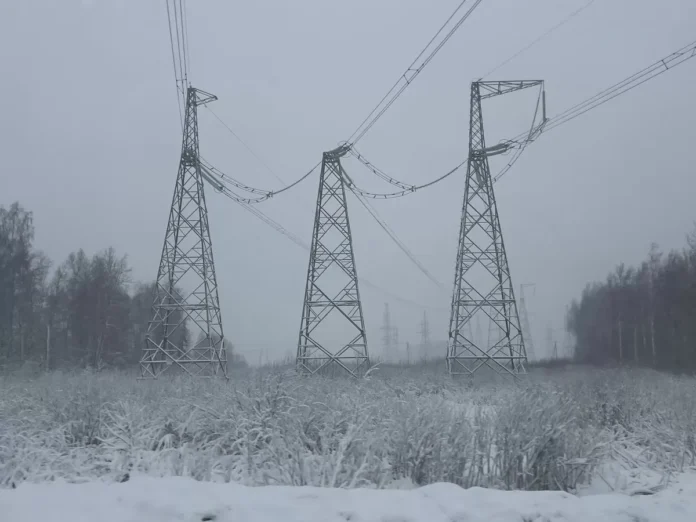Artificial intelligence (AI) is rapidly transforming various industries, and the energy sector is no exception. With the increasing demand for reliable and efficient energy sources, there is a growing need for AI to help manage and optimize power grids and energy infrastructure. One area where AI can make a significant impact is in the management of electric power networks and equipment at power plants.
Electric power networks are complex systems that require constant monitoring and maintenance to ensure smooth operation. They consist of various components, including power generation plants, transmission lines, and distribution networks. In addition, there is a vast amount of data generated from these systems, making it challenging for human operators to analyze and make decisions quickly. This is where AI comes in.
One of the ways AI can assist in managing electric power networks is through the use of prompts. Prompts are a specific type of labeled data that provides information about the electrical system’s status and performance. They can include data such as voltage levels, power consumption, and equipment conditions. By using prompts, AI algorithms can learn and understand the functioning of the network and identify any potential issues or inefficiencies.
For example, in the case of a power plant, prompts can be used to monitor the equipment’s performance, such as turbines and generators. By analyzing the prompts, AI can identify any abnormalities or potential failures, allowing operators to take preventive measures to avoid downtime and costly repairs. In addition, AI can also make predictions based on historical data to estimate when equipment may need maintenance or replacement, helping to optimize maintenance schedules and reduce costs.
When it comes to the distribution and transmission of electricity, AI can also play a crucial role in managing the power grid. As the demand for electricity continues to grow, the grid’s complexity increases, making it more challenging to ensure a stable and reliable supply of energy. AI can analyze the vast amount of data generated from the grid, including weather conditions, power demand, and supply, to make real-time decisions. For instance, in case of a power outage, AI can automatically reroute power to avoid disruptions and reduce downtime.
One of the main advantages of using AI for managing electric power networks is its ability to adapt and learn from new data continuously. As more data is collected and processed, AI algorithms become more accurate and efficient in identifying patterns and making predictions. This can result in improved overall performance and efficiency of the power grid, leading to cost savings and better energy management.
Furthermore, AI can also assist in identifying and mitigating potential risks to the electric grid. For example, AI algorithms can detect anomalies or unusual patterns in the system, indicating a potential cyberattack or physical tampering. By alerting operators to these threats, AI can help prevent significant disruptions and ensure the security and reliability of the power grid.
However, the use of AI in managing electric power networks also raises concerns about job displacement. AI’s ability to automate tasks traditionally performed by humans may lead to job losses in the energy sector. To address this issue, it is essential to upskill and reskill workers to perform more complex and high-value tasks that require human input and decision-making.
In conclusion, the use of AI and prompts in managing electric power networks and equipment has the potential to revolutionize the energy sector. With the increasing complexity and demand for electricity, AI can assist human operators in making faster and more accurate decisions, leading to improved efficiency, reliability, and cost savings. However, it is crucial to address the potential challenges and ensure a smooth transition to an AI-powered energy sector. With the right approach, AI can be a valuable tool in creating a sustainable and resilient energy future.
http://voz-ciudad-ar.com/
https://telegra.ph/Ellen-Ellis-12-05https://500px.com/p/ellenellis12https://gravatar.com/humblesoftly145785e4c8https://coolors.co/u/ellenellis12https://www.intensedebate.com/people/EllenEllis12 https://www.pinterest.com/ellenellis12/https://conifer.rhizome.org/EllenEllis12https://gitlab.com/EllenEllis12https://www.wattpad.com/user/EllenEllis12https://fliphtml5.com/homepage/yvmnw/ellenellis12/https://gifyu.com/ellenellis12https://opencollective.com/ellen-ellishttps://www.ameba.jp/profile/general/ellenellis12/https://devpost.com/ellenellis12?ref_content=user-portfolio&ref_feature=portfolio&ref_medium=global-navhttps://www.folkd.com/profile/290369-ellenellis12/https://www.openstreetmap.org/user/EllenEllis12https://dzone.com/users/5251495/ellenellis12.htmlhttps://www.domestika.org/en/ellenellis12https://telegra.ph/Voz-Ciudad-Una-Ventana-a-la-Informaci%C3%B3n-Local-y-Global-12-06https://www.demilked.com/author/ellenellis12/https://sorrel-deer-n0clkv.mystrikingly.com/blog/voz-ciudadhttps://list.ly/ellenellis12/newsfeedhttps://www.tripadvisor.com/Profile/F2527GNellenehttps://www.mapleprimes.com/users/EllenEllis12https://www.indiegogo.com/individuals/38239455https://www.goodreads.com/user/show/184271001-ellenellis12-ellishttps://disqus.com/by/ellenellis12/about/https://startupxplore.com/en/person/ellenellis12https://www.bitsdujour.com/profiles/E8qEnlhttps://myanimelist.net/profile/EllenEllis12https://www.reverbnation.com/ellenellis12https://trello.com/u/ellenellis12https://unsplash.com/@ellenellis12https://medium.com/@ellenellis12

